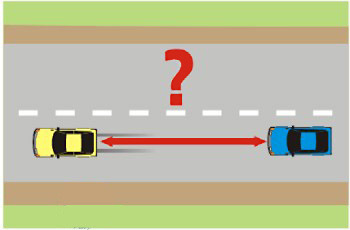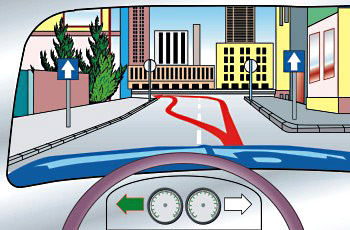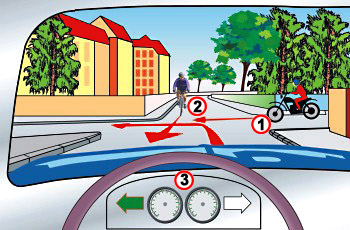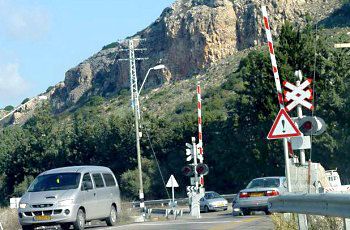Question:1
Which documents should a driver be in possession of whilst driving?
Category : Rules and Regulations
Question:2
Who is held responsible for a vehicle causing excessive noise?
Category : Rules and Regulations
Question:3
Which of the following is an emergency vehicle?
Category : Rules and Regulations
Question:4
Under what condition is it permissible to install additional lamps to those already installed in a vehicle?
Category : Rules and Regulations
Question:5
What is the minimal gap that you should legally maintain from the vehicle in front of you?

Category : Rules and Regulations
Question:6
Is the Licensing Authority authorized to permit the use of a vehicle with size and weight which exceed regulations?
Category : Rules and Regulations
Question:7
When are you permitted to pass another vehicle on its right side?
Category : Rules and Regulations
Question:8
What is a one-way street?
Category : Rules and Regulations
Question:9
The license of a “New driver” will not be renewed as a regular drivers license, if he is convicted of:
Category : Rules and Regulations
Question:10
What should a driver of an overtaken vehicle do?
Category : Rules and Regulations
Question:11
Who is required to hold the vehicle’s registration papers?
Category : Rules and Regulations
Question:12
What is the responsibility of a vehicle owner as regards to an offence committed by his vehicle?
Category : Rules and Regulations
Question:13
In the following picture:

Category : Rules and Regulations
Question:14
The vehicle’s headlights light the road with:
Category : Rules and Regulations
Question:15
What is a driver required to do when there’s a change in his health condition?
Category : Rules and Regulations
Question:16
What is a “path”?
Category : Rules and Regulations
Question:17
The “hard shoulders” are not designed for vehicle traffic, except for:
Category : Rules and Regulations
Question:18
Is it permitted to drive an un-roadworthy vehicle?
Category : Rules and Regulations
Question:19
Which is the correct lane for turning left?

Category : Rules and Regulations
Question:20
Is it permitted to drive with a tractor on the sidewalk in order to pass a road obstruction?
Category : Rules and Regulations
Question:21
The following picture shows a pavement. Which of the following sentences is correct?

Category : Rules and Regulations
Question:22
Where in the vehicle should the fluorescent vest be kept (except for motor-cycles)?
Category : Rules and Regulations
Question:23
What is a “pedestrian crossing”:
Category : Rules and Regulations
Question:24
It is prohibited to overtake on a steep hill:
Category : Rules and Regulations
Question:25
Where should you stop your vehicle when you are obliged to stop before a railway crossing?
Category : Rules and Regulations
Question:26
When the vehicle in front of you signals about its intention to turn left:
Category : Rules and Regulations
Question:27
Is it obligatory to obey the directions and signals of an authorized municipal inspector, even when a certain direction or signal is opposed to the traffic signs?
Category : Rules and Regulations
Question:28
Which of the following sentences is correct: The law prohibit drivers from making a left U-turn:
Category : Rules and Regulations
Question:29
You are driving vehicle no. 3. To which of the following vehicles would you give right-of-way?

Category : Rules and Regulations
Question:30
Under which conditions is it permitted to cross railway tracks?

Category : Rules and Regulations

